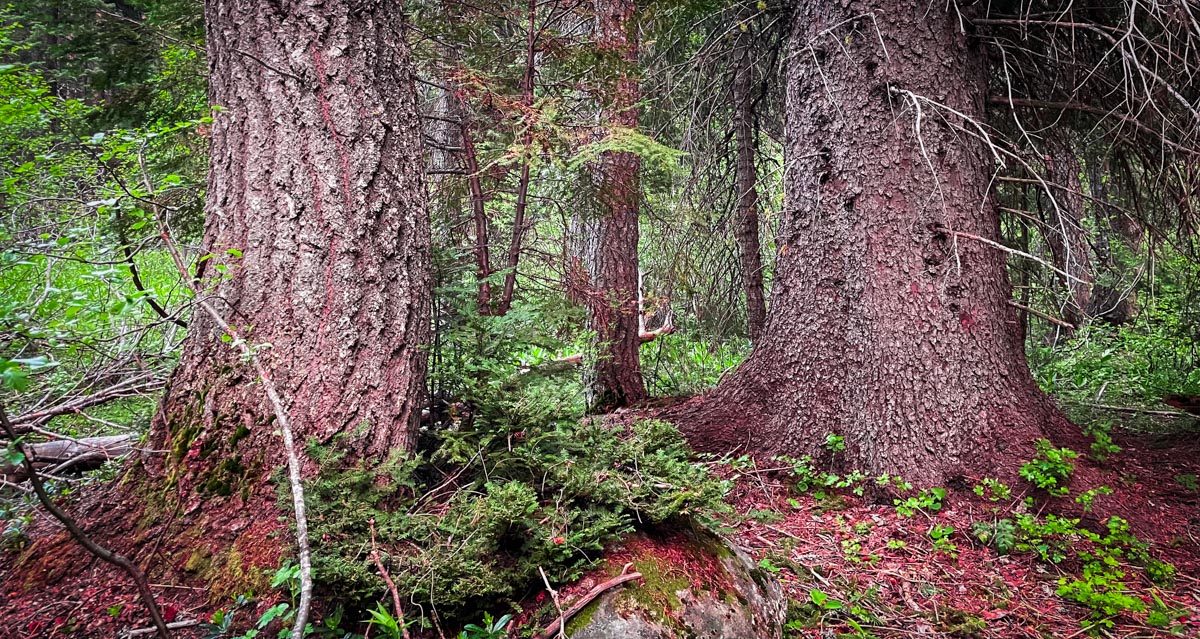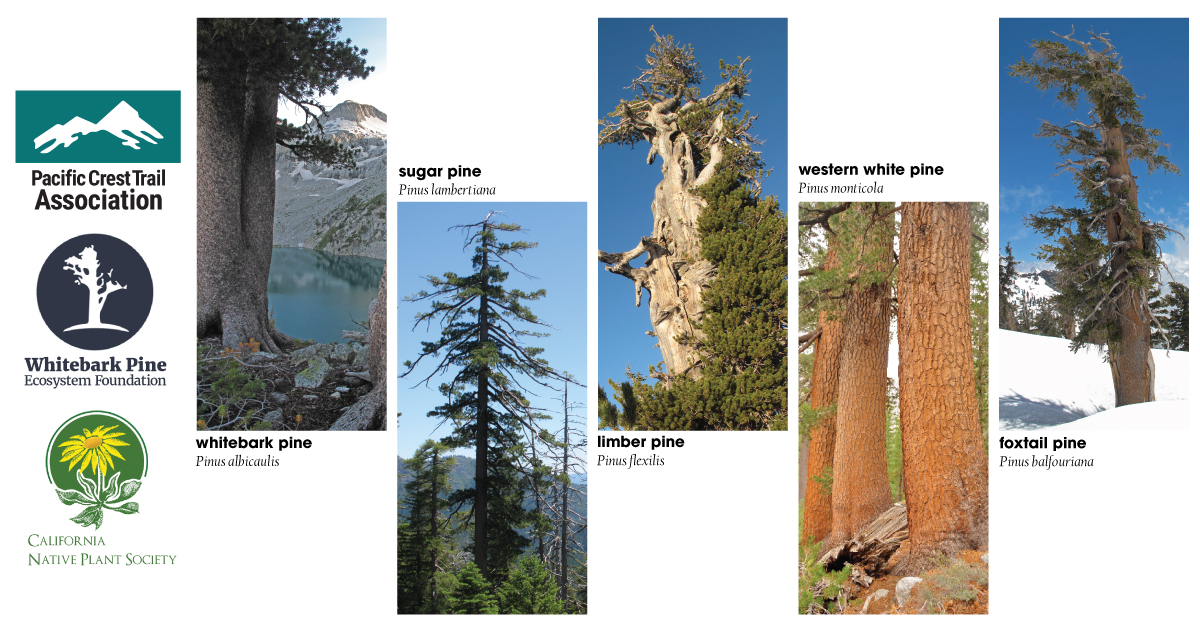Engelmann spruce and subalpine fir form one of the most common forest associations in the Rocky Mountains and parts of the Cascades. In California, this is one of our rarest subalpine forest vegetation alliances. These two species occur in only a few places in the state–often not even together unlike in the rest of their range. We recently visited the Russian Wilderness for a trail working trip and I became re-familiarized with these two wonderful tree species.
Continue reading “Engelmann Spruce and Subalpine Fir in California”California Book Award Gold Medal

The Klamath Mountains: A Natural History, edited by Michael Kauffmann and Justin Garwood, was chosen as the Gold Medal winner for Contribution to Publishing at the 92nd Annual California Book Awards by the Commonwealth Club.
Five-Needle Pines Community Science Project
As a board member of the Whitebark Pine Ecosystem Foundation, I decided to help cook up this project because all is not well with the five-needle pines of western North America.
Five-needle pines along the Pacific Crest Trail include the sugar pine, limber pine, foxtail pine, whitebark pine, and western white pine. Crucial to the mountain ecosystems where they occur, these trees face an uncertain future, and scientists are trying to learn more.
You can help and are invited
Whitebark Pine Ecosystem Foundation has partnered with the California Native Plant Society and the Pacific Crest Trail Association to raise awareness about the plight of five-needle pines and conduct this community science project. The goal is to get thru-, section-hikers, and everyone who visits to the trail to map and inventory five-needle pines along the Pacific Crest Trail.
By participating, you will help increase awareness of the changes affecting our world while improving connections to nature. Working together to document what’s happening is a positive step toward recovery.
Continue reading “Five-Needle Pines Community Science Project”SF Chronicle: Best Books of 2022
I am proud to say that the San Francisco Chronicle has listed The Klamath Mountains: A Natural History as one of the best nonfiction books of 2022!

Allison Poklemba cooked up a trailer about the book, I think she did a great job 😉
The Klamath Mountains: A Natural History
I could not be more proud of our new book. It is, in reality, a project 10-years in the making. I first started cooking up the idea when I finished Conifer Country in 2012 based on the fact that a natural history had never been written for the Klamath Mountains. Around 2015, during a winter gathering, I proposed an outline to a group of friends and asked who wanted to help write the book with me. Justin Garwood raised his hand and the rest is now history!
Continue reading “The Klamath Mountains: A Natural History”

